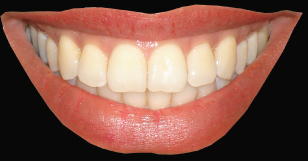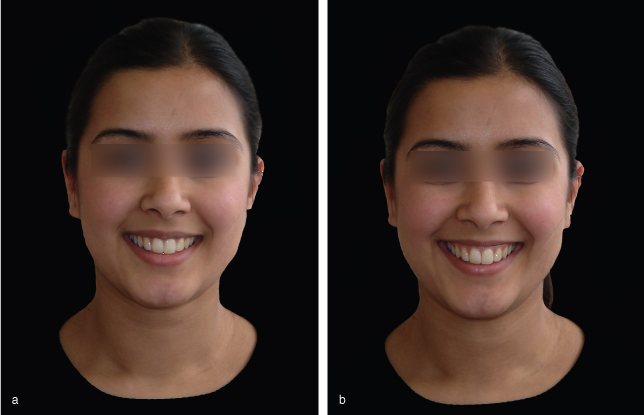6
Smile analysis
INTRODUCTION
Most patients seek orthodontic treatment to improve their smile aesthetics. With modern techniques, particularly in combination with restorative dentistry, it is possible to improve the appearance of the smile assuming its individual components are understood. Knowledge of the components that contribute to an aesthetic smile are also important for informed consent reasons, as any anatomical limitations in achieving ideal aesthetics should be explained to the patient before commencing any form of treatment. Although tooth colour is a very important factor in smile aesthetics, it will not be considered within this chapter as it is considered to be more in the realms of restorative dentistry rather than orthodontics. A number of important components of the smile will be discussed including:
- The lip line
- The smile arc
- Tooth size and symmetry
- The midlines
- The buccal corridors
- Gingival aesthetics
- Contacts, connectors and embrasures.
THE LIP LINE
The lip line is the vertical relationship between the upper lip and the maxillary dentition during smiling (Figure 6.1). There are in fact two lip lines: an anterior lip line and a posterior lip line. The anterior lip line determines the amount of maxillary incisor and gingival display whilst the posterior lip line determines the amount of posterior tooth and gingival show.
Figure 6.1 The lip line is the vertical relationship between the upper lip and the maxillary dentition during smiling. There is an anterior and posterior lip line.

Regarding the anterior lip line, ideally the full length of the upper incisors and a small amount of gingivae should be visible during smiling.1 The lip line is high when a thick continuous band of gingival tissue is visible and low when less than 75% of the crown height of the central incisors can be seen. The lip line in females is 1–2 mm higher than in males so it is acceptable for females to show 1–2 mm of gingivae anteriorly during smiling.
A number of factors can influence the lip line and amount of incisor display during rest and smiling:
- The type of smile. There are two types of smile described within the literature. The posed smile (Figure 6.2a) is a voluntary smile, not linked with emotion, that is fairly reproducible. An example of a posed smile is one elicited when someone is asked to smile for a photograph. The spontaneous smile (Figure 6.2b) is an involuntary smile, linked with emotion, where there is maximal elevation of the upper lip. An example of a spontaneous smile is that elicited when somebody is told a funny joke. It is important to examine patients and take records of both the posed and spontaneous smiles, as the amount of incisor and gingival show in the latter is greater.
- Elevation of the upper lip. There is individual variation in upper lip elevation during smiling (mean = 7–8 mm). Excessive elevation, also termed hypermobility, results in a high lip line even if the underlying skeletal pattern is normal.
- Vertical maxillary height. Vertical maxillary excess can result in a high lip line. Conversely, vertical maxillary deficiency, sometimes associated with maxillary retrognathia, can result in a low lip line. Orthognathic surgery can be used to address such discrepancies.
- Vertical dental height. A reduced vertical dental height, as seen in digit sucking, results in reduced incisor display.
- Incisor inclination. Proclination of the maxillary incisors results in elevation of their incisal edges and a reduction in tooth display. Conversely, retroclination increases tooth display. This is an important relationship to understand when one is altering the incisor inclination to a significant extent (e.g. presurgical orthodontics).
- Age With ageing, the amount of maxillary incisor display will tend to reduce while the amount of mandibular incisor exposure increases during rest and smiling.2 This is due to gravitational effects, as the perioral tissues tend to sag with age and the oral aperture moves inferiorly and the reduction of the maxillary incisor crown length due to toothwear.
Figure 6.2 Photographs demonstrating the (a) posed and (b) spontaneous smile.

The posterior lip line is the vertical degree of upper premolar and molar display during smiling. Population-based studies suggest that the average gingival display in the premolar region should equate to 2 mm.3
Stay updated, free dental videos. Join our Telegram channel

VIDEdental - Online dental courses


